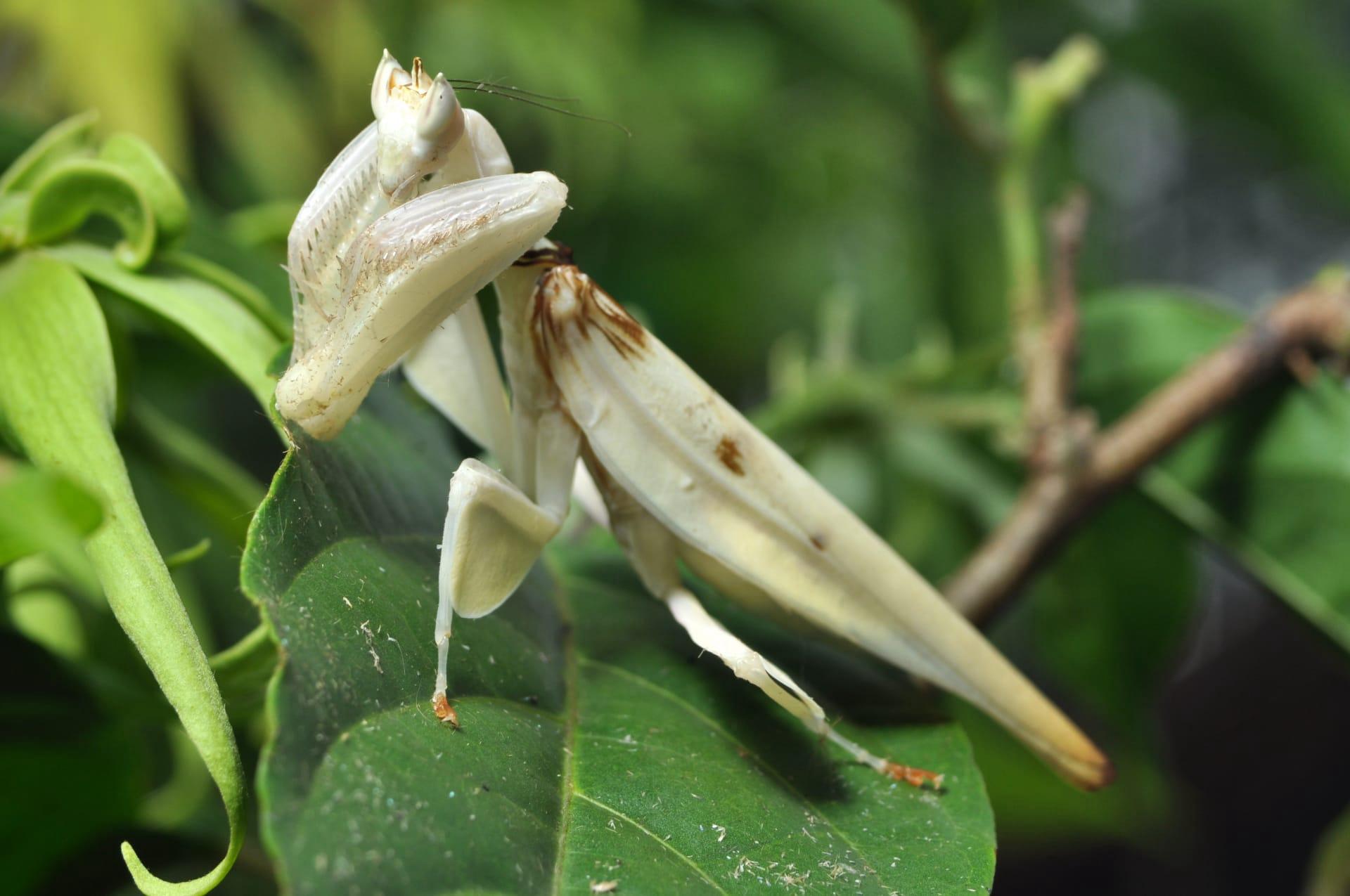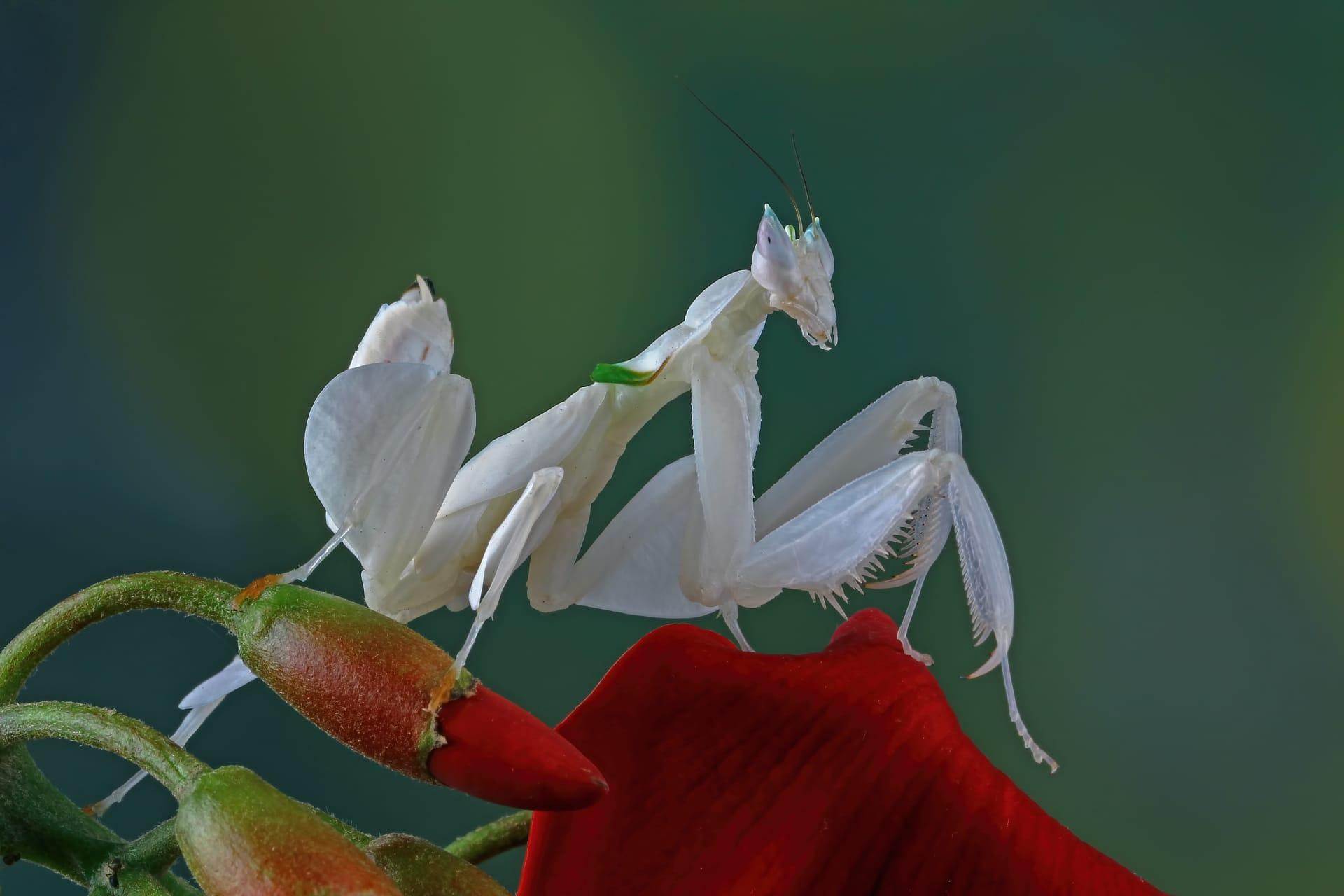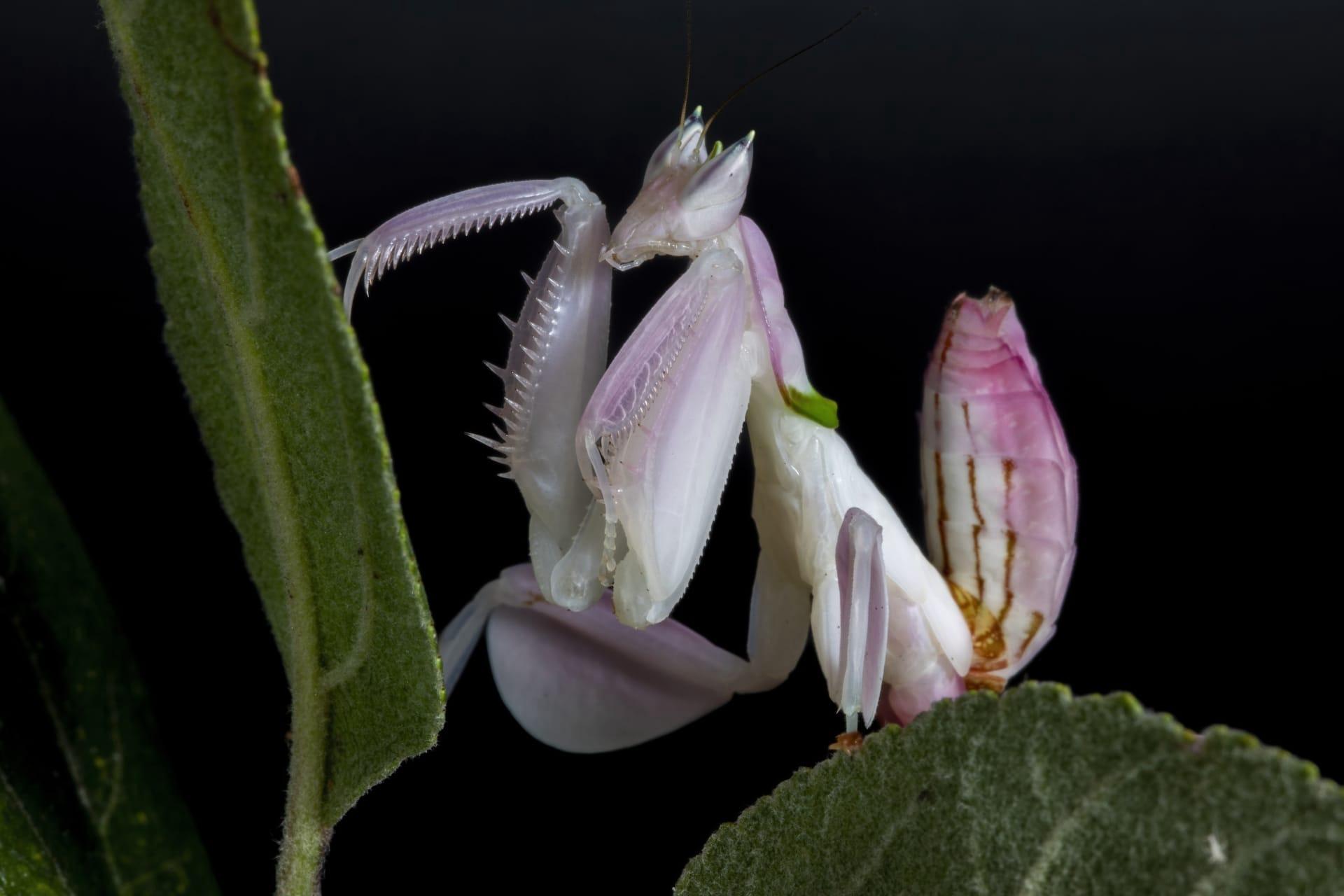1
The Orchid Mantis, known scientifically as Hymenopus coronatus, is a remarkable creature for its ability to mimic flowers, primarily orchids. This species, predominantly found in Southeast Asia, exhibits a unique form of camouflage. Unlike other mantises, the Orchid Mantis looks strikingly similar to a flower, with its body resembling petals. This adaptation not only aids in hiding from predators but also in trapping prey. The mantis positions itself amongst real flowers and can even change its color to match the surroundings. It typically takes on shades of pink or white, reflecting common orchid colors in its habitat.
These insects are also known for their sexual dimorphism. Females can grow up to about 2.8 inches (7 cm) in length, making them significantly larger than males, who only reach up to about 1 inch (2.5 cm). This size difference is not just for show; it plays a crucial role in their survival and reproduction strategies. Larger females can capture bigger prey, providing them with more energy for egg production. Conversely, the smaller size of males enables them to be more agile and efficient in escaping predators and seeking out females for mating.

2
One of the most fascinating aspects of the Orchid Mantis is its hunting technique. While most predators rely on chasing down their prey, the Orchid Mantis uses a 'sit-and-wait' strategy. It remains motionless, blending in with its floral surroundings until an unsuspecting insect comes close enough. Research has shown that these mantises can attract their prey actively. The bright colors and flower-like shape of the Orchid Mantis are not just for camouflage; they also lure insects that are seeking nectar. This predatory strategy is quite effective, making the Orchid Mantis a formidable hunter in its ecosystem.
The Orchid Mantis is also known for its lifespan, which is quite short. They typically live for about 5 to 8 months. This brief life cycle is common among many insect species, but for the Orchid Mantis, it's a race against time to grow, mature, mate, and for females, lay eggs. The entire life cycle, from egg to adult, spans only about six months. During this time, the mantis undergoes several molts, shedding its exoskeleton to grow. This process is crucial for their development and ability to reproduce before their life cycle ends.

3
Regarding reproduction, the mating behavior of the Orchid Mantis is quite intriguing. Males, despite being smaller and more vulnerable, take significant risks to find a mate. The process involves the male cautiously approaching the female, often under the cover of darkness to reduce the chance of being eaten. Yes, females sometimes consume their mates! This behavior is thought to provide the females with nutrients that are beneficial for egg production. However, not all mating encounters end tragically for the males; some successfully mate and escape.
The Orchid Mantis is not only a master of disguise but also an excellent example of mimicry in the animal kingdom. Its physical resemblance to orchids is a form of aggressive mimicry – a strategy where predators look like something harmless or appealing to their prey. This goes beyond simple camouflage. The Orchid Mantis has evolved to mimic the shape, color, and even texture of an orchid flower so precisely that it can deceive not only its prey but sometimes even humans.

4
The young of the Orchid Mantis, known as nymphs, are born mimicking ants. This ant mimicry provides them with a form of protection during their vulnerable early stages. The resemblance to ants, which are often avoided by predators due to their bite or taste, helps the nymphs avoid being eaten. As they grow, they gradually lose this ant-like appearance and start to develop their distinctive flower-like appearance. This transition is a remarkable example of how the Orchid Mantis adapts its survival strategy as it matures.
Another interesting fact about the Orchid Mantis is its eyesight. Despite their predatory nature, these mantises do not rely heavily on vision for hunting. Their eyes are more adapted to detect movement rather than detail. This means they can easily notice the slightest movement of potential prey or predators, but they don't rely on visual detail to identify them. Instead, they use their other senses, such as touch and smell, to navigate and hunt in their environment. This adaptation is particularly useful for an ambush predator that remains stationary for long periods.

5
The Orchid Mantis is also notable for its role in the ecosystem. While they are predators, their unique hunting strategy contributes to the control of insect populations in their habitats. By preying on various insects, they help maintain a balance in the ecosystem. This is particularly important in areas where certain insects might become pests if their numbers are not naturally regulated.
The Orchid Mantis has become a popular subject in the pet trade due to its stunning appearance and intriguing behavior. However, this popularity has led to concerns about overcollection from the wild. Conservation efforts are being put in place to ensure that their natural populations are not adversely affected. It's essential for potential pet owners to source these creatures responsibly, preferably from breeders who do not contribute to the depletion of wild populations. This approach helps preserve the Orchid Mantis in its natural habitat while allowing enthusiasts to enjoy their beauty and unique characteristics.